Blog
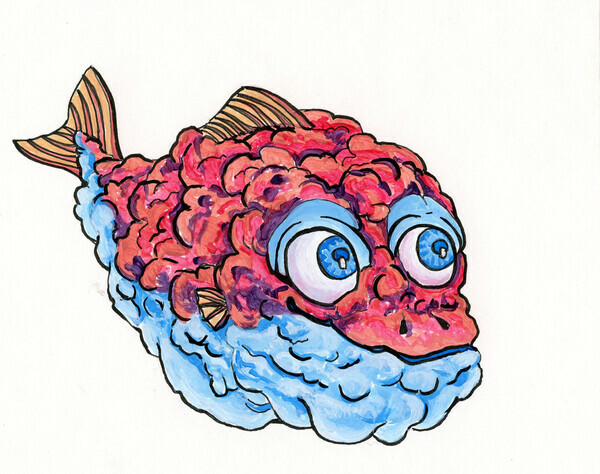
An unattractive name for an unattractive fish, especially as portrayed in this illustration. Rocks don’t move but if they do, they are probably lumpfish waiting for their food to swim by. It is like waiting for inspiration to strike before you create, whereas experience tells us that creativity follows sweat. There is no denying that there are moments of inspiration, some of which come unheralded and out of the blue, but usually artists have to put the work in.
An artist who put the work in was Frida Kahlo from Mexico. She was a woman who wrestled with infertility, depression and physical limitations. She was bedridden with an upper body cast, but she took her experiences in life and applied it to her art. A number of artists have been able to take the pain of their lives and translate it into motivation or directly into their artwork.
Kahlo
Like Frida, I was influenced in my own art when my younger brother, Robert, died of cancer in 2001. Using erosion of wood and sandstone as a theme, I produced the following painting in colours that were a departure for me but which reflected my pain of grief and loss.
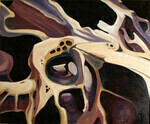
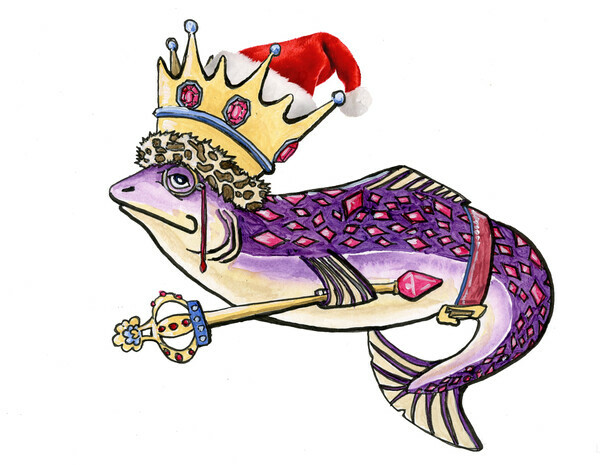
One of the things I hoped for from these books was new information. I always wanted to add to my knowledge and the “King of the Salmon” did this. I did not know that the Makah tribe on the West Coast honoured the ribbon fish as a precursor of salmon to the extent that they forbade catching and killing them as it would negatively affect the run of the salmon and their harvests for food.
Indigenous people saw cycles in nature and life and worked to perpetuate those repetitions for themselves and future generations. One source of First Nations’ beliefs talked about actions today that are good for up to seven generations of their offspring.
Some of the work of M. C. Escher echoes the cycles in life. He was a mathematician/artist whose work was all over North America during the 1960’s. Rooms were decorated with wooden tables that were originally rolls from the phone company, parachutes inverted on the ceiling and Escher prints on the walls, often in colours designed to glow in black light. He was known for many things such as invented creatures, perspective images that captured infinity or street scenes that morphed into books on shelves. Many of his works dealt with mathematics and our perceptions. Detailed drawings, etchings and wood engravings were what he worked with. Rather than the black light colours of the 1960s most of his images were in black and white.
His work can be found on: MC Escher
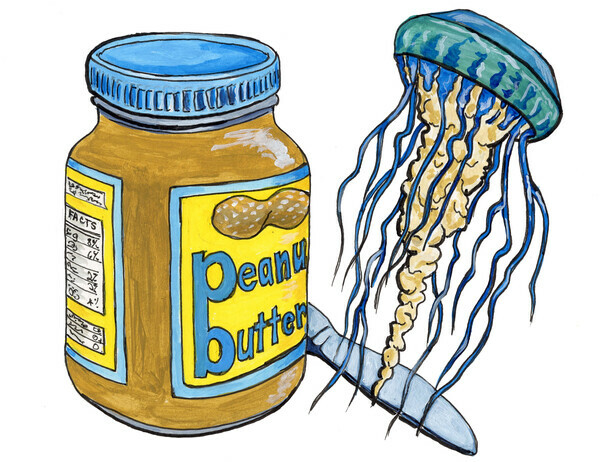
Jellyfish was shortened into jelly and it just seemed natural to imagine it with peanut butter, one of my staples. Combined on bread or toast it forms a beautiful union, one that would be known by many kids and their parents.
This substitution was one of the first coloured images I produced and although I had a plan for a book it was just starting.
On our way to New York City, Diane and I stopped over in Toronto where we visited my Aunt Helen, who’s turning 100 now. While in Toronto one of the trips I wanted to make was to see the Group of Seven in the McMichael Canadian Art Collection.
I was surprised when I discovered that a major show of Mary Pratt’s work was on at the same time. I have been fascinated by her detail and lifelikeness with everyday objects such as trout on tin foil and the dinners she was making. She shot slides of these meals so they didn’t have to sit as models while she recorded the details. Slides also helped her remember subtleties of colour and shape.
She transformed ordinary jars of jelly and jams into rich textures that held the secrets of the universe. All she needed was a little peanut butter.
There are a couple of videos on the National Gallery website:
Mary Pratt
News:
If you are around the Nanaimo area on Sat Dec 3 from 10-4 or Sun Dec 4 from 12-4 you are invited to the Old City Panache, located at 250 Prideaux St. Dave will be there for Art Walk showing some of his paintings, prints, books and cards.
10% of any sales will go to the Parkinson’s Society of British Columbia.
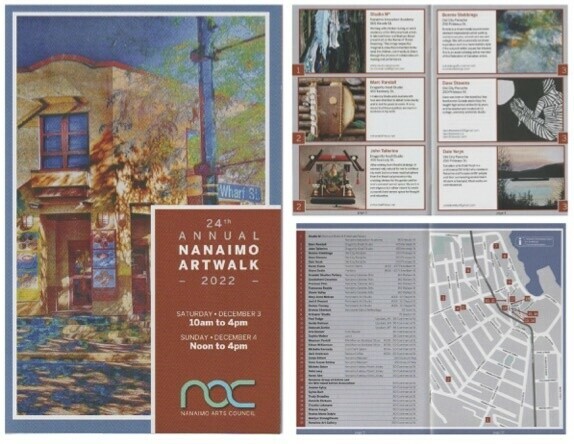
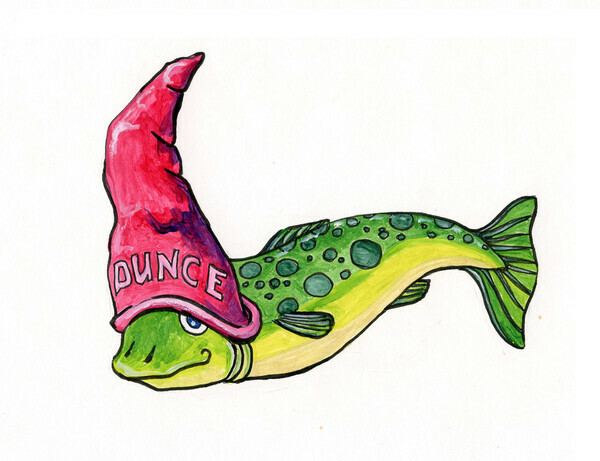
This was a new one for me.
There was a time when I was aware of thinking that I had become an idiot, and although I never had to wear a dunce cap at school I wasn’t a stellar student. I received physical punishment when as a new student in grade 5 I got the strap for a snow ball fight and then later I received a spanking for misspelling a word at a boys school. I went into Grade 11 when I was 14 because they thought a private school put me ahead so I would graduate sooner, but I got out of Grade 12 when I was 19. I needed 3 years to complete grade 11 and 2 years for grade 12. I thought any brains I had before had slipped out of the back of my head.
It was at college and then university that I realized I could do school and do it very well.
To the world I was an “idiot” but I learned that I was smart and could do the work that was required to maintain good marks.
A printmaker that I have always admired is Antonio Frasconi, an Uruguayan born artist who immigrated to the USA. He illustrated numerous books and did woodcuts that focused on his political beliefs. What I liked most about him was that he used the character of the wood in his prints, whether it was the grain of the wood or marks.
He didn’t try to hide the flaws and from him I learned that it’s OK to have imperfections that make you different.
Frasconi
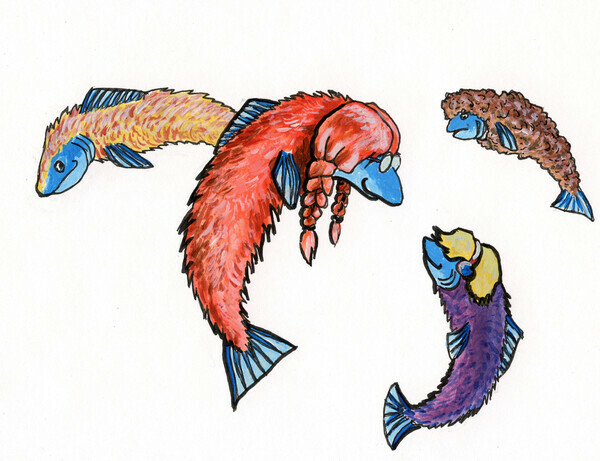
Herring is the correct spelling but you might see it as “hairing” which might in turn lead to imagining fish with hair all over their body. They also tend to school and show up in numbers during specific times of the season. The Scandinavian countries were very good at fermenting or smoking these fish and they became a staple and delicacy of their diet.
When I was thinking of hair and groups I gravitated towards the hippies of the 60’s who often grew their hair, believed in free love and practiced back-to-nature practices. There are still people around, especially in out-of-the-way places such as the Gulf Islands of British Columbia, who continue with aspects of the lifestyle advocated by hippies. Many of their values have now become mainstream and they have contributed much to our culture.
I don’t know him to be hairy but I would see a shot of “Angel of the North“ by Antony Gormley whenever I watched the titles for Vera on British TV. It is a huge steel sculpture on a hillside in West Yorkshire. It is a stylized figure in which spread out wings replace arms and it measures 20 meters high by 54 meters from wing tip to wing tip.
Another series of his that I like includes European Field and American Field. In these he covers the floor of rooms in buildings with small clay figures which all look up at you with cavities for eyes. It is both disturbing and enthralling at the same time. Mostly I wonder where he stores the sculptures between shows.
Antony Gormley
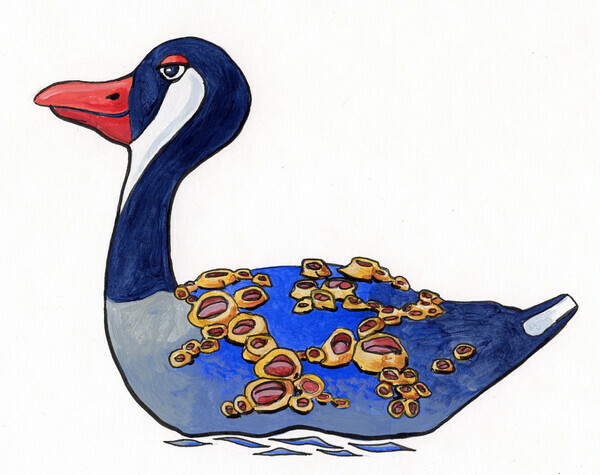
We often think in terms of what we know and it can influence our understanding of the world.
A goose barnacle is named after a bird that can also float and paddle along the top of the water.
We see geese near pounds in Stanley Park, in marshes or in open fields.
I enjoyed sharing space with them but they were often indiscriminate in where they deposited their droppings. When we played rugby on some of those fields we often came away with cuts and bruises but we had to add infections from the geese droppings.
Joe Fafard is from the Prairies of Canada. He grew up on a farm and most of his sculptural work is influenced by animals and people that he saw daily. Cows, horses and characters made up the bulk of his work. One piece I always enjoyed was his tribute to Emily Carr and her animals on the street outside of a gallery on Granville St around 8th Ave. (It has now moved the Emily Carr University of Art and Design on 1st Ave.)
His work has been widely recognized nationally and he was represented at the Canada House at the Expo in Vancouver. He has worked in clay, concrete, steel and bronze. He has also been an artist and a teacher for local youths and college age students.
Joe Fafard (web page)
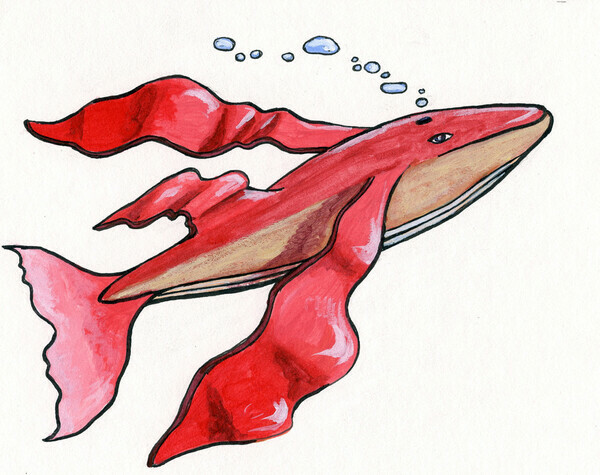
Which is more important, decoration or function.
It is a question that has plagued artist for years and I recently heard a Haida artist, Tejas Collison, talking about art as reflecting life. There was no word for art in his native tongue. The distinction between art and craft is non-existent. Both are important and both can be creative in their production.
Personally I think it comes down to the creativity of the individual and the purpose for creating the work. Function isn’t really a concern of art but it is a concern if it was made for a purpose. A Shaker quote encapsulates this conflict nicely. “Don’t make something unless it is both necessary and useful (functional); but if it is both necessary and useful, don’t hesitate to make it beautiful (decorative).” The fin whale illustrates the decorative at the expense of function, where the fins are so long and floppy they become more decorative than functional.
There have been movements or artists who have sought to combine function with decoration. Groups such as the Bauhaus furniture design, or Art Nouveau. The understanding of craft is often associated with the products of these movements but the lines are blurred and the term Art can easily be applied.
A modern artist who was known for his decorative work was Matisse. Due to advancing age and deteriorating health he took the technique of cut outs from quality coloured paper. Originally it was a technique he had used as a compositional aid and he made them into his finished work. Some of his earlier work reflected this direction but he made it into a decorative method for producing art.
You can look him up on Google or YouTube where there are some videos explaining his art.
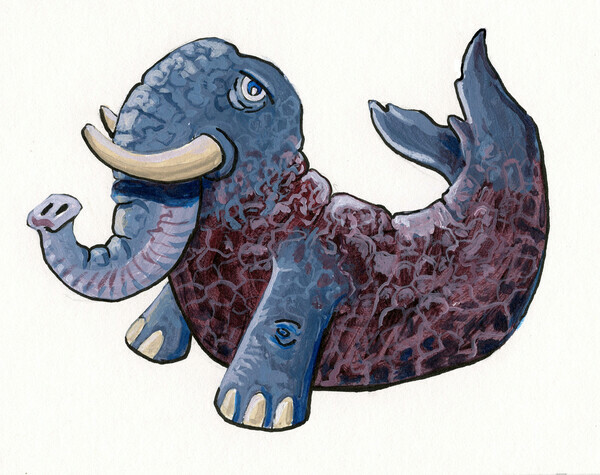
I’ve always been fascinated by seals and sea lions but I know they are the bane of commercial fishers’ lives. I mostly thought in romantic terms and I idealized them.
It was on the news that I saw footage of sea lions entering commercial nets containing salmon. The nets were high enough to keep the fish in but not to keep the sea lions out and they feasted on the salmon while the fishers stood helplessly by. Those log booms and rocks where sea lions congregated suddenly became staging areas for a marauding host.
It’s interesting that what seems normal and beautiful to one group is the opposite to another. We can look with eyes that see beauty or a species at risk while another group looks at the loss of a way of life.
This conflict reminds me of the work of an artist, Alex Colville, whose work has been labelled magical realism. He was from the east coast of Canada and his artwork that is particularly impressive is the Horse and Train, from1954. In it a dark horse runs between some tracks towards an oncoming train. It is impressive because the beauty and majesty of the horse is going to lose to the mechanization of the train. It could point to the conflict of the change over from horse powered energy to the machine age or could be more personal and deal with the fear of someone we know who is on a path to self destruction. The horse, like the person we know, just needs to step off the track to be safe. They don’t, or won't, and instead are headed towards tragedy.
Alex Colville
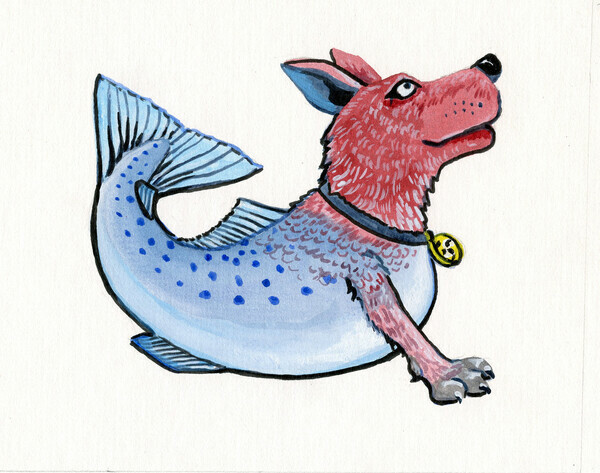
My family spent some days in Campbell River, my birth place, and our friend, Tim Dorsay, arranged for my son Peter and I to go out in a small boat with a local. Our host realized that most of the other boats were chasing the salmon at an island out across the water, too great a distance for his little boat.
He decided to let Peter fish for cod etc at a drop off closer to shore, saying he’d move if nothing hit after thirty seconds. I couldn’t believe what I was hearing, but sure enough on his first jig Peter hooked into a reasonably sized rock cod. We played catch and release for the first few fish and then Peter hooked into something big. It took him awhile to bring the leviathan up but nothing could have prepared us for what was to come.
“That’s a shark” I said as the fish swam slowly towards the surface in big lazy circles. “It’s a dogfish”, our guide said, “Probably an old one judging by his size.”
We managed to unhook him and returned him to the deep. I’ve seen other dogfish but never one that big.
Someone who lives in Campbell River is Sonny Assu. Sonny was a former student at North Delta Secondary and he went on to Kwantlen College and Emily Carr College of Art and Design. He now works independently as an artist and has/had work in the Vancouver Art Gallery, the Museum of Anthropology, and various galleries around Vancouver and Montreal.
He was commissioned by Art Starts to produce a student interpretation with a First Nations design and he chose to work with students from North Delta. It was a great boost for my students to work with an established artist.
Sonny Assu website
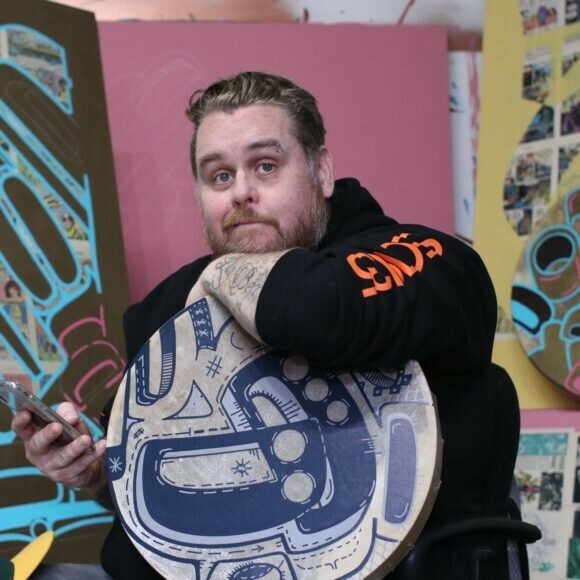
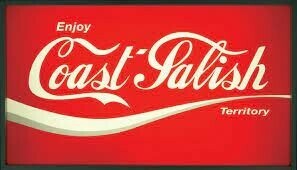
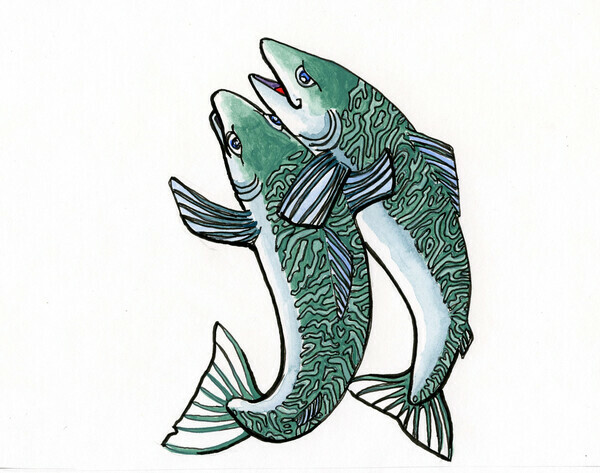
What is something “chummy” that lives in the waters of British Columbia? Why—chum salmon, of course!
When I taught art in high schools I included art history and the work of other artists. One artist I found fascinating was Shaun Tan from Australia. His work is a cross between children’s books and graphic novels. There were certain images that stuck with me long after I had closed the covers.
One of those images was his take on depression, or as he says “the darkness overcomes you”, in his book The Red Tree.
I’m used to the idea of a dark cloud which follows the person around and only rains on them, a stereotypical representation. Shaun, on the other hand, worked with a giant grouper and although it floated above the person it has one of the saddest looks I have ever seen. It persisted in my memory because it was unique and it captured my own imagination. It gave me freedom to see depression differently as something outside of circumstances that can hover over a person despite what they do.
Check out Shaun's books on his website.
http://www.shauntan.net/
older blog items...













